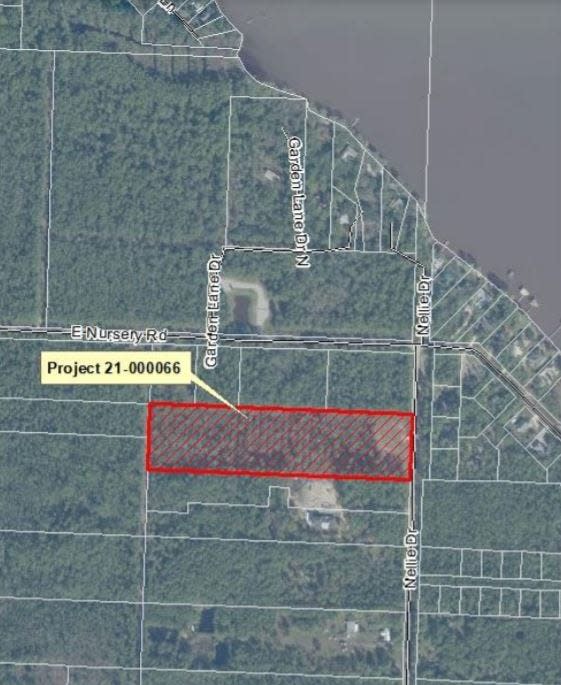Walton County planning director hints at code changes requiring developers to plant more trees
FREEPORT — Just days after he and his department began moving forward with a proposed amendment to the land development code to more strictly define building heights, Walton County Planning Director Mac Carpenter is hinting at another possible code amendment that would increase requirements for developers to plant trees along the streets in their projects.
In his latest move in connection with possible changes to the land development code, Carpenter used Wednesday's meeting of the Walton County Technical Review Committee (TRC) to persuade the engineer for Nellie Preserve, a residential project in Santa Rosa Beach, to consider planting trees along the single subdivision street off Nellie Drive.
The TRC is a group of county government department officials, chaired by Carpenter, who review development proposals for technical compliance with the land development code.

30A project proposal: Controversial Walton townhome project heads toward approval
Other recent planning action: Walton County may limit vacation rentals with parking regulation
Planning Department staffers who had reviewed the proposal prior to the meeting had determined that street trees were required in the proposed 19-lot, 9.9-acre subdivision. But Dean Burgess, an engineer with Emerald Coast Associates, the engineering firm for the project, disputed that conclusion.
Carpenter agreed with Burgess' conclusion that the street trees were not required under the land development code, but told Burgess that "this development sure would be a lot nicer if it had trees along that street."
Initially, Burgess indicated that the developer, Leo Huang, might voluntarily plant the street trees, but added, "I don't want to tie my developer to doing something that the code doesn't actually require."
"I understand your point completely," Carpenter told Burgess before hinting that the discussion over where street trees currently are required "could be one of those things that generate change to the code."
Carpenter's comment echoed a comment he made earlier this month as the TRC was considering a proposed townhome development when he said neighborhood concerns about the proximity of the proposed townhomes to their homes likely would spur what since has become an ongoing effort to change how the land development code addresses building setbacks related to its calculation of building stories.
At that time, Carpenter said those neighborhood concerns were "probably going to be the genesis of changing that in the land development code to where we look at stories one way in the building code for the purposes of life safety, and we look at stories in a different way in the land development code for the purposes of compatibility."
At Wednesday's TRC meeting, when asked by Burgess whether the county was moving toward broader requirements for street trees, Carpenter said, "If it were my choice, I'd say yes." Then, hinting at a potential look at the land development code to boost street tree requirements, Carpenter said, "It's not completely my choice — at the moment."
Environment: Florida has lost 44% of its wetlands since 1845. What is the environmental impact?
In the end, Burgess informally agreed to Carpenter's push to plant street trees on the condition that the trees not be installed until after the planned homes' layouts are determined and driveway locations are established, so that trees wouldn't have to be removed if their location became problematic during construction.
Following that informal agreement, the TRC voted to approve the subdivision proposal, pending the developer's successful response to technical questions about the project raised in a report from county planning staff. Because the project is classified as a "minor development," the TRC approval is all that is required for the project to proceed to construction.
This article originally appeared on Northwest Florida Daily News: Walton County Planning Director hints at code change for more trees
